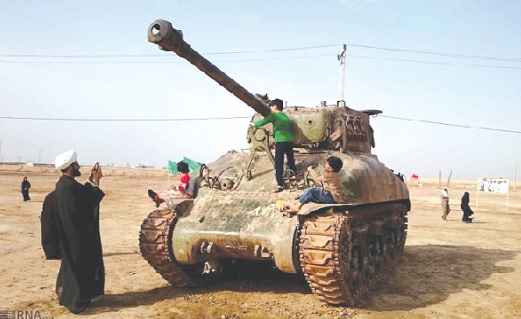In 2022, a Canadian politician, Dominic Cardy, was on vacation in Ukraine. He visited sites that had experienced Russian bombings and been damaged, and he shared multiple images and videos on his personal X (Twitter) account.
In 2021, British internet personality Miles Routledge visited Afghanistan during the Fall of Kabul, and has since returned multiple times. He was captured and detained by the Taliban for several months. He shared photos, livestreams, videos and stories from Afghanistan online, as well as later recounting his experiences in interviews and a book.
Can a war lead to tourism boom? Not to be confused with Dark tourism, war tourism is recreational travel to active or former war zones for purposes of sightseeing or historical study. Reckless as it might sound, the phenomenon did not begin today.
War artists and correspondents are considered to be the first war tourists. In 1653, Dutchman Willem van de Velde took to sea in a small boat to observe a naval battle between the Dutch and the English, making many sketches on the spot.
During the Crimean War, tourists led by Mark Twain (one of my favourite men) visited the wrecked city of. Fanny Duberly, travelled with her husband to the Crimea in 1854 and stayed with him throughout his time there despite the protests of commanders such as Lord Lucan.
As the only woman at the front line, she was the centre of much attention. This woman was told of planned attacks ahead of time, giving her the opportunity to be in a good position to witness them.
The First Battle of Bull Run was the first major land battle of the American Civil War. Expecting an easy Union victory, the wealthy elite of nearby Washington, including congressmen and their families, had come to picnic and watched the battle. When the Union army was driven back, the roads back to Washington were blocked by panicked civilians attempting to flee in their carriages.
Thomas Cook began promoting tours to the battlefields of the Second Boer War before the conflict had ended. A variety of other travel agents advertised the easily accessible and picturesque battlefields of Tugela and Ladysmith. Groups of tourists also closely followed the Franco-Prussian War, visiting the battlefields shortly after the fighting was over.
One of the first travel agents, Henry Gaze, created a tour which included the battlefield of Waterloo in 1854. Waterloo was visited by schoolboys and teachers for educational purposes.
The rising popularity of Waterloo as a tourist attraction led to the appearance of numerous charlatans claiming to have participated in the battle. The guide also highlighted the booming trade in relics and souvenirs related to the engagement.
Despite the criticism, war tourism continued to develop at the pace of the tourism industry in general. At the beginning of World War I, it became evident that following the end of the war, the related battlefields would attract considerable attention from potential tourists.
Although instances of war tourism during the Great War have been documented, they remained limited due to opposition by the French authorities.
In September 1934, 100,000 Catholic former servicemen from both sides of the conflict visited Lourdes in order to pray for peace. A large number of Anglican tourists also undertook tours to the battlefields of the Palestinian campaign. Greece, Turkey and Italy also became popular war tourism destinations.
A large number of battlefield guides were produced by a variety of travel agencies, further fueling the rise of war tours. Following the end of World War II, former battlefields created new war tourist destinations. Saipan, as well as other battlefields of the Pacific, became a place of pilgrimage for Japanese veterans who reburied and erected monuments to their fallen comrades.
As recently as 2008, former security professional Rick Sweeney formed War Zone Tours, while another of the companies operating in this market was begun by a former New York Times journalist, Nicholas Wood.
Sweeney is part of a group of tour guides who take tourists to countries that have experienced or are mired in conflict. A tourist on a trip to Baghdad paid up to $40,000.
The Syrian civil war attracted many adventure-seekers. According to retired Israel Defence Forces Colonel, Kobi Marom, who leads tours of the war zone across the Israeli border, tourists are interested in seeing the conflict and go "crazy" when they learn that they are probably being observed by Al-Qaeda militants.
In Iran, students, members of the sij militia and interested people are routinely taken to the former battle sites of the Iran–Iraq War, as the war is considered by the Iranian ruling regime a "holy defence" and an ideological pillar to the existence of the ruling Islamic Republic.
The trips are organised by Basij, an offshoot of the Iranian Revolutionary Guard Corps (IRGC), which enlists the travellers normally in mosques, schools or universities.
The trips, which are officially called "Tours for the Travellers of Light" are low-cost and are taken by bus under poor safety conditions. Since 2008, accidents involving the buses taking the "tourists" have killed at least 70 people.
Crazy.
But significant.

